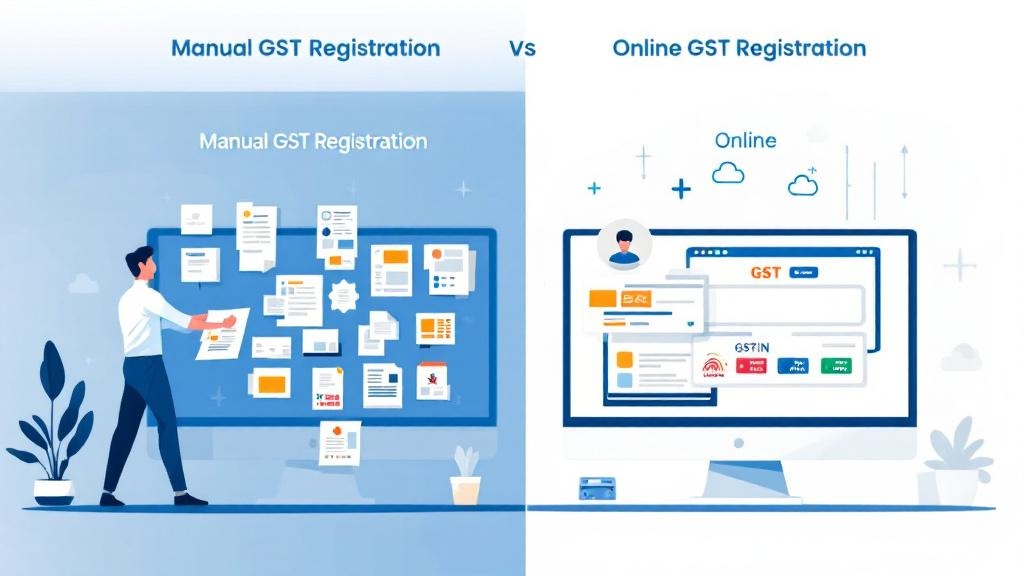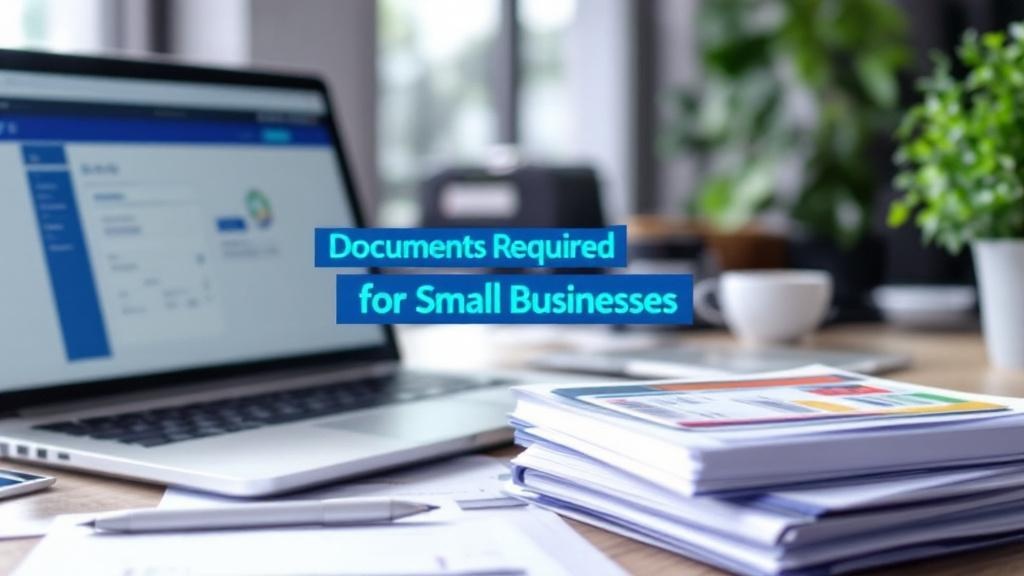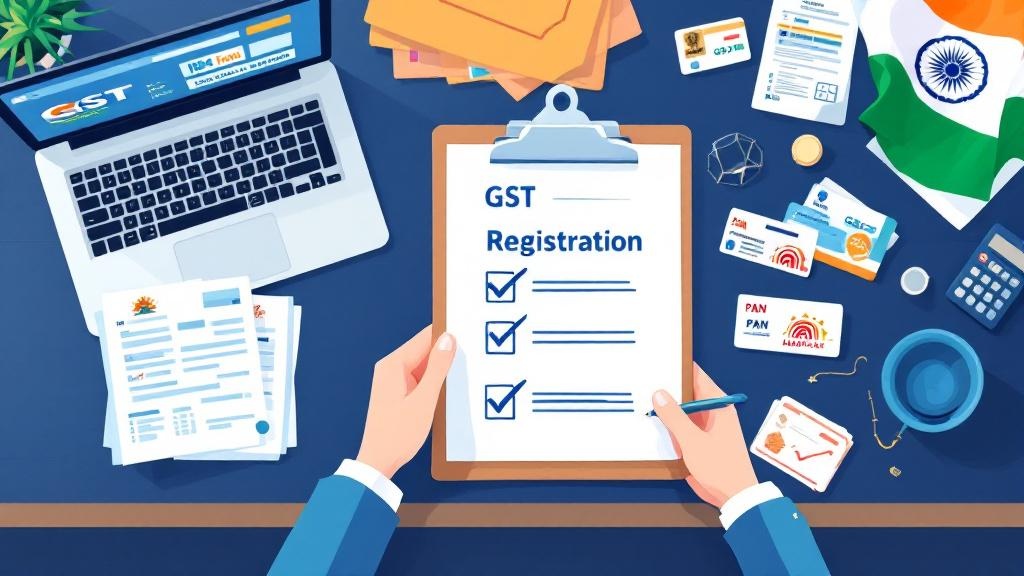GST registration is one of the most critical steps for businesses operating in India. Whether you’re a small trader or a large enterprise, getting registered under the Goods and Services Tax (GST) regime is essential to remain compliant and enjoy tax benefits. But when it comes to the registration process, many business owners are often confused between manual and online GST registration.
In this article, we’ll break down the differences between manual and online GST registration processes in India, explore their pros and cons, and help you decide which route is right for your business.
What is GST Registration?
GST Registration is the process by which a taxpayer gets registered under the Goods and Services Tax system. Once registered, a unique GSTIN (Goods and Services Tax Identification Number) is assigned, which is used for all GST-related activities.
GST registration is mandatory for:
-
Businesses with an aggregate turnover exceeding the prescribed limit (₹20 lakhs for services and ₹40 lakhs for goods in most states).
-
Individuals engaged in inter-state supply.
-
E-commerce operators.
-
Casual taxable persons and non-resident taxable persons.
-
Others as notified by the government.
You can find detailed and hassle-free GST registration services through FinTax24, a trusted platform offering expert assistance.
Manual GST Registration: A Thing of the Past?
Technically, manual GST registration refers to the older method used during the pre-GST era, where physical documents were submitted to the tax office for registration under VAT, Service Tax, or Excise.
Since the introduction of GST in July 2017, India has completely transitioned to an online registration system. The GST portal (https://www.gst.gov.in) is now the sole platform for all GST registration and compliance activities.
However, some might still use the term “manual registration” to refer to offline help from tax consultants or agents, who collect documents physically and submit them online on your behalf.
Online GST Registration Process: Step-by-Step
Registering for GST online is a straightforward process, especially if you’re tech-savvy. Here’s how you can do it:
Step 1: Visit the GST Portal
Go to the official GST website: https://www.gst.gov.in
Step 2: Generate a Temporary Reference Number (TRN)
-
Click on “Register Now” under the Taxpayers (Normal/TDS/TCS) section.
-
Fill in basic details like name, PAN, email ID, and mobile number.
-
An OTP will be sent for verification.
-
After verification, a TRN is generated.
Step 3: Fill in the Registration Application (Part B)
-
Log in using your TRN.
-
Complete the application by uploading relevant documents:
-
PAN card
-
Aadhaar card
-
Business address proof
-
Bank account details
-
Photograph of owner/partners/directors
-
-
Choose your business type and enter HSN/SAC codes for your goods/services.
Step 4: Verification
-
You can verify the application using Aadhaar OTP or Digital Signature Certificate (DSC) (for companies and LLPs).
Step 5: ARN Generation
After successful verification, an Application Reference Number (ARN) is generated.
Step 6: Approval
The GST officer may:
-
Approve your application and issue GSTIN within 3-7 working days, or
-
Ask for additional clarification/documents.
Key Differences: Manual vs Online GST Registration
| Aspect | Manual Registration | Online Registration |
|---|---|---|
| Mode of Submission | Physical submission to tax department | Entirely online via GST portal |
| Turnaround Time | Slow and dependent on physical office visits | Fast and transparent, usually completed within 7 days |
| Convenience | Inconvenient, time-consuming | Easy, accessible from anywhere |
| Document Submission | Paper-based | Digital uploads |
| Status Tracking | Not real-time | Real-time tracking through ARN |
| Cost | High if using agents repeatedly | Cost-effective if done directly or via online services |
| Security | Prone to human errors and data loss | Secure digital storage |
Advantages of Online GST Registration
Here’s why online registration is the preferred method:
✅ 1. Time-Saving
No need to stand in queues or travel to government offices. Everything can be done from your home or office.
✅ 2. Transparency
The online portal allows you to track your application status, submit clarifications, and download your certificate instantly.
✅ 3. Efficiency
Uploading documents online is faster and minimizes the chances of paperwork errors.
✅ 4. Eco-Friendly
Reduces paper consumption and encourages digital practices.
Common Challenges Faced During Online Registration
While online GST registration is simple, users often face challenges like:
-
Website downtime or glitches
-
Confusion around business codes (HSN/SAC)
-
Technical errors in DSC installation
-
Unfamiliarity with document formats
-
Delays due to incorrect details
These issues can be avoided by using professional help from platforms like FinTax24 GST Services, where experts guide you through every step and ensure error-free submission.
Should You Use a GST Consultant or DIY?
While the portal is user-friendly, not everyone is comfortable with technical processes. Here’s a quick comparison:
| Aspect | DIY (Do It Yourself) | Using a Consultant |
|---|---|---|
| Cost | Minimal | Charges apply |
| Control | Full control over data entry | Dependent on third party |
| Time | May take longer if unfamiliar | Saves time with expert handling |
| Accuracy | Risk of errors | Professionally reviewed for compliance |
If you’re starting out and want a seamless experience, it’s a good idea to go with a trusted GST consultant or platform that ensures timely and accurate registration.
Final Thoughts: Which Is Better?
Technically, manual GST registration is no longer applicable under the GST regime. The government has moved entirely to a digital platform for improved efficiency and transparency.
However, if by “manual” you mean using an agent or third-party consultant who handles the online process for you—then the choice depends on your comfort level.
-
If you’re tech-savvy and confident, doing it yourself online is a great way to save money.
-
If you prefer convenience and accuracy, opt for expert services like FinTax24 GST Registration to get it done without stress.
FAQs on GST Registration
1. Is GST registration free of cost?
Yes, there’s no government fee for GST registration. However, consultants may charge a service fee.
2. How long does the GST registration process take?
If documents are in order, it usually takes 3–7 working days.
3. Can I cancel my GST registration later?
Yes, if your turnover falls below the threshold or your business closes, you can apply for cancellation online.
4. Is Aadhaar mandatory for GST registration?
Aadhaar authentication is now a part of the process and helps speed up verification.
Conclusion
The GST registration process in India has evolved to embrace digital transformation. Whether you’re a freelancer, small business owner, or enterprise, online registration is the only method officially accepted today.
While DIY is an option, professional services like FinTax24 offer the added advantage of peace of mind, especially when you’re busy building your business.
So, ditch the old “manual” mindset and embrace the digital path to quick, error-free GST compliance!







Comments (0)